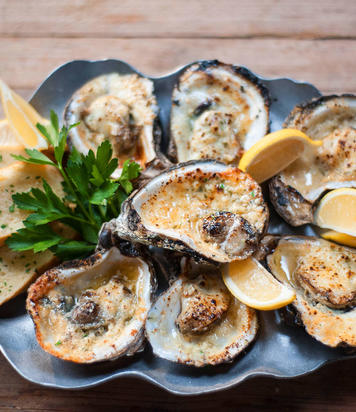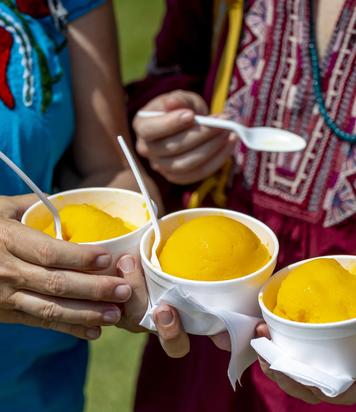As far as ingredients ago, these three sound simple as can be. Bell pepper. Celery. Onion. But don’t let their humble nature fool you. Alone, they may be nothing extraordinary, but blended together, they explode into a trifecta of tasty flavors that form the base of nearly all Cajun and Creole cooking in Louisiana.
Often cooked and then used to make a roux, this magical concoction marks the savory beginning of many a stew, soup, sauce, stuffing and more. Crawfish etouffée. Gumbo. Jambalaya. Even red beans and rice. They all begin with these three finely chopped vegetables sautéed in a small amount of oil or fat – often drippings left in the pan from browning the hot, smoked or andouille sausages that make their way to the finished dish as well.
But why these three vegetables? They’re packed with flavorful liquid that heat breaks down, causing them to release or “sweat” their moisture. These liquids then cling and reduce in the skillet, leaving behind residual sugars that caramelize the mix into the soul of the dish they are about to become. The result is so flavorful, it could be considered holy, hence it’s many names: The Holy Trinity. The Cajun Trinity. The Holy Trinity of Cajun Cooking. No matter what you call it, chefs and serious foodies call it indispensable.
How to Make the Holy Trinity
Flavors so complex and crucial to Cajun and Creole cuisine must be pretty difficult to master on your own, right? Not at all.
Ingredients:
- approximately 2-3 tbsp. pan drippings, butter or vegetable cooking oil (adjust amount as needed to ensure veggies do not stick)
- green bell pepper
- onion
- celery
Method of Preparation:
- Using the same pan drippings from the meat you may have just browned for your dish — or starting with a healthy splash of oil, butter or bacon grease, if you don’t have pan drippings — heat the fat in a skillet over medium heat.
- Add finely chopped green bell pepper, celery and onion to your pan in a 1:1:1 ratio, or use the amounts favored by many local chefs of 2 cups onion to 1½ cup celery to 1¼ cup green pepper.
- Sauté the mixture, stirring just enough to prevent burning, until the vegetables start to soften and release their moisture, forming a glaze-like liquid in the pan. Reduce heat to low and continue cooking slowly, stirring often, until the vegetables are fully caramelized and darker in color.
The whole process can take about 30 minutes, but it’s just a matter of chopping, stirring and watching. That’s all this is to it.
How the Holy Trinity of Cajun Cooking Got its Name
The phrase seems to have been first documented in a 1981 article in the Florence Times newspaper in Alabama, but was thought to have been originally coined and later made popular by iconic Louisiana Chef Paul Prudhomme, whose restaurant K-Paul’s Louisiana Kitchen and subsequent cookbooks, hot sauces and seasoning mixes are largely credited with elevating Cajun and Creole cuisine to the popularity it enjoys today.
"I’m going to hang my hat on Prudhomme," Chef John Folse, co-owner of Restaurant R'evolution and author of "The Encyclopedia of Cajun & Creole Cuisine" said in a 2017 article in The Times-Picayune. "I can trace it back to him in the late 1970s when he opened K-Paul's. I'm not sure he made it up, but I don't know anybody else who made it up and the first time I heard it, I heard it from Paul."
The name derives from the Christian doctrine that while there’s only one God, the deity manifests itself in three distinct forms: the Father, the Son and the Holy Ghost. Together, the three create a higher form much stronger than each part alone. Kinda like the ingredients in your gumbo, yeah?
And since the state’s large Roman Catholic population so reveres their Cajun and Creole food, it’s no wonder the name stuck. Given Cajun cooking’s French-derived beginnings, its Holy Trinity is very similar to that country’s classic culinary trio, the French mirepoix, a traditional blend of onion, carrots and celery that is ground zero for most French cuisine. But unlike mirepoix’s ratio of two parts onion to one part carrot and celery, the Cajun Trinity can be a simple one-one-one ratio — although some Louisiana chefs like shake up that mix and throw in a bit more onion for kick.
Using the Cajun Holy Trinity in Recipes
Discover more recipes and immerse yourself in Louisiana's Food Culture. For more insights into Louisiana cuisine, culinary experiences and travel inspiration, sign up for our eNewsletter and stay connected to the flavors of Louisiana.









